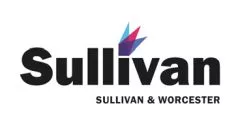An increasing number of corporations are directly buying from (or building) clean electricity sources. For decades most Fortune 1000 companies did little more than seek to manage costs as they bought electricity and fuel. This model of simply relying on the existing marketplace to meet energy needs has, however, suddenly become outdated. More and more companies are realizing the strategic advantages of sourcing renewable power. Companies that fail to adapt will face serious competitive disadvantages as this trend accelerates.
Several factors are driving this explosion in interest in direct purchases of clean energy. Reasons range from pure cost per kWh purchased, to market and regulatory certainty, to the brand value of reducing reliance on fossil fuels, to concerns over the future of specific markets in the face of a changing climate. Consistent in every one of these motives is an underlying economic case: replacing electricity generated from burning fossil fuels with electricity from wind and solar is a good business strategy.
Over the past few years electricity from wind and solar has become cheap – in many cases it is less expensive to build new generating capacity from wind or solar than to build a new gas or coal plant. Buying renewable electricity removes fuel price volatility leading to price stability. Wal-Mart has been aggressively buying renewable power for years, primarily for the cost savings the company realizes. IKEA also cites cost savings as the primary driver for its massive clean energy purchasing program. Oil refining giant Valero contracted for wind energy to drive refining operations in Texas because wind power was cheaper and the price was more stable than what was otherwise available in the market.
Renewable electricity is clean, and an increasing number of companies are setting aggressive clean energy and greenhouse gas emission reduction targets. Companies across the business spectrum – ranging from Apple, to Dow, to General Motors, to Bank of America – have set goals for 100% renewable power for their global operations. These companies have built major branding and advertising campaigns around their sustainable investments. Consumers, both individuals and businesses, place real value in their buying choices on the energy and climate footprint of brands. Forward-thinking companies are committing to buying clean power in an effort to build competitive advantage with these consumers.
Corporate interest in renewables also stems from the anticipation of significant climate-policy changes, which could materially disrupt the market and existing cost structure of fossil fuel-based electricity. Several countries have put serious carbon pricing regimes in place as part of their efforts to meet the goals laid out in the Paris Climate Accord. The two largest global markets, China and the United States, have both formally joined the pact. In the United States, EPA's Clean Power Plan is still being contested, and the effect of specific implementation remain uncertain, but a material impact on power markets and electricity customers remains virtually certain. Around the globe many other countries are working through the implementation of new laws to reduce greenhouse gas emissions, all of which shifts value towards renewable electricity generating sources.
Many large corporations are not only trying to calculate the effects of these regulatory shifts, but are directly supporting the underlying climate policy changes. Adobe, Amazon, Apple, Blue Cross and Blue Shield, Google, IKEA, Mars, and Microsoft all submitted briefs supporting the Clean Power Plan in the current proceeding before the D.C. Circuit Court of Appeals. While their briefs to the D.C. Circuit presented a diverse set of reasons for supporting the Clean Power Plan, from obtaining regulatory certainty on the future of power markets, to mitigating health effects (and costs), to a belief it will support longer term global economic stability — each was rooted firmly in the conviction that the Clean Power Plan will lead to long-term increased valuation for these companies. As more corporations see the value of aligning their business with mitigating and adapting to climate change, the pace of clean energy acquisition by corporations will only increase, growing a market worth hundreds of billions of dollars for new solar and wind projects.
This potential has grabbed the attention of clean energy developers and investors. While the renewable energy market has grown rapidly over the past few years, developers and investors have become frustrated that many utilities are reducing the amount of wind and solar generated electricity they are willing to buy under long-term contracts. Such long-term commitments to buy the electricity generated from a renewable energy project are typically necessary for an investor or lender to put money into the construction or purchase of the project. Without these long-term agreements billions of available dollars are not being committed to projects. The combination of these two dynamics – developers and investors looking for new long-term commitments to buy power, while businesses are looking to lock in long-term supplies of clean and inexpensive solar and wind power – is driving a fundamental shift in the electricity market.
New corporate buyers will be a vital and growing segment of the solar and wind markets. Developers and investors are actively looking for ways to gain access and market share in this new segment. The Renewable Energy Buyers Alliance, which was created by the Rocky Mountain Institute, the World Resources Institute, the World Wildlife Federation and Business for Social Responsibility, has attracted more than one hundred of the largest corporate buyers to join its membership, as well as dozens of leading renewable energy developers, private equity fund managers, and banks to its events.
In addition to shifting corporate strategy and a matching demand
for long-term buyers, changes in electricity regulation and
innovations in the deal structures used to sell and finance
electricity have helped open this new market for buyers to contract
directly with power plants many
miles away. An explosion in available data about usage as well as
new technologies to track energy consumption are making the
intermittent nature of solar and wind power easier and cheaper to
manage, further supporting the economic case for shifting corporate
energy consumption to renewable power.
Developers and investors must incorporate this huge new segment of the market for power as part of their respective strategies. Effective, forward-thinking energy planning will be an important driver of future competitive advantages across most businesses — and the companies that get this transition right will be rewarded. It will be vital for corporations to learn the power contracting and delivery process at a level of detail that only a select few super-users of energy have ever previously considered. Finding the experience and talent to succeed in this dynamic new market will be increasingly challenging. Early adopters are creating competitive advantage by being ahead of this market. Building a solid foundation for either the buying or selling of renewable power directly to corporations will be a barometer of success for businesses of all types.
The content of this article is intended to provide a general guide to the subject matter. Specialist advice should be sought about your specific circumstances.


